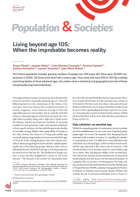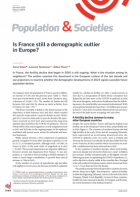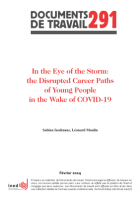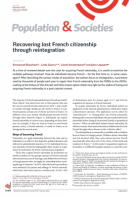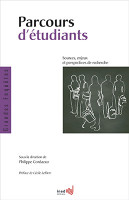
Parcours d’étudiants
Sources, enjeux et perspectives de recherche
Collection : Grandes Enquêtes
2019, 220 pagesForeword, Elise Verley
Preface, Cécile Lefèvre
Introduction: Studying student trajectories: what for?, data, methods and findings
Philippe Cordazzo
Part 1. Sources of knowledge about the world of students
Chapter 1. Questioning students: a sociology of Observatoire National de la Vie Étudiante [National observatory of student life] surveys on student living conditions, Elise Tenret
Chapter 2. Contributions and stakes involved in local surveys of student living and study conditions, Séverine Landrier and Xavier Collet
Chapter 3. Analyzing trajectories of university students in AES programs [economic and social administration] and in legal studies to apprehend differences between universities in the Île-de-France region (SISE database), Leila Frouillou and Léonard Moulin
Chapter 4. Measuring university trajectories in Africa: the case of University of Ouagadougou students, Jean-François Kobiané, Marc Pilon and Philippe Cordazzo
Chapter 5. Contributions of the Generations surveys to study of students’ occupational integration, Julien Calmand and Boris Ménard
Chapter 6. Where France’s student population stands in international comparisons, Christine Guégnard and Jake Murdoch
Part 2. Being a student, becoming an adult
Chapter 7. Student resources: measurements, inequalities, and vulnerabilities, Jean-François Giret et Elise Tenret
Chapter 8. Pursuing university studies while having children: prevalence, circumstances and impacts on studies, Arnaud Régnier-Loilier
Chapter 9. Being a mother and a student: typology of student mothers and their circumstances, Aden Gaide
Chapter 10. Residential autonomy of European Union students, Philippe Cordazzo and Jake Murdoch
Part 3. Spaces and mobility
Chapter 11. International students: varied flow scales and intensities, Clarisse Dideron-Loiseau
Chapter 12. Student mobility between institutions and what it reveals about the French university system, Myriam Baron
Chapter 13. Aspirations of students in Haute Normandie in light of social and regional disparities, Fanny Jedlicki and Clarisse Dideron-Loiseau
[Trajectories of higher education students], Philippe Cordazzo (ed.)
France currently has over 2.6 million higher education students. In a context of mass higher education and successive reforms, the training, occupational futures, and living conditions of students constitute major issues that require detailed analyses. It is crucial to study connections between student living conditions, transitions to adulthood, and trajectories.
This work offers a panoramic view of the different methods for analyzing student trajectories, together with findings and comparisons. It differs from other works on the subject by the diversity of sources and approaches used, which not only makes study of this group particularly rich and productive but also allows for discussing an extremely wide variety of topics. Entry into adulthood, couple formation, parenthood, leaving the parental home, internal and international mobility, occupational and career plans, material and financial conditions, transition from education to the labor market—all these aspects, all studied here, need to be taken into account if we are to analyze thoroughly the complexity of student trajectories, outcomes, and futures.
Several sources are used to identify the profiles of these trajectories. The first among them are surveys on student living conditions conducted by the Observatoire National de la Vie Étudiante. Tracking of birth cohorts also provides precious data on trajectories and the length of training taken, as do data collected by universities themselves from administrative databases and local surveys. Not to mention comparative data from international surveys (Eurostudent, Cheers, and Reflex) and qualitative life history analyses.
Acquiring detailed knowledge of higher education students, understanding the processes that shape their training and personal trajectories, requires in-depth study of the different data sources and application of the right measurement methods.
Philippe Codazzo is a professor of demography at the University of Strasbourg, where he occupies the position of assistant director of the SAGE research laboratory (Societies, Actors, Government in Europe). He is also an INED associated researcher. His work focuses on student trajectories from education to occupational integration, with specific attention to the transition to adulthood and the vulnerabilities associated with that process. He also specializes in data sources, comparability, and measurement methods. He is a member of the Groupe de Travail sur l’Enseignement Supérieur (GTES; Taskforce on higher education) and has contributed analyses of France’s Observatoire de la Vie Etudiante student living conditions survey since 2010.


